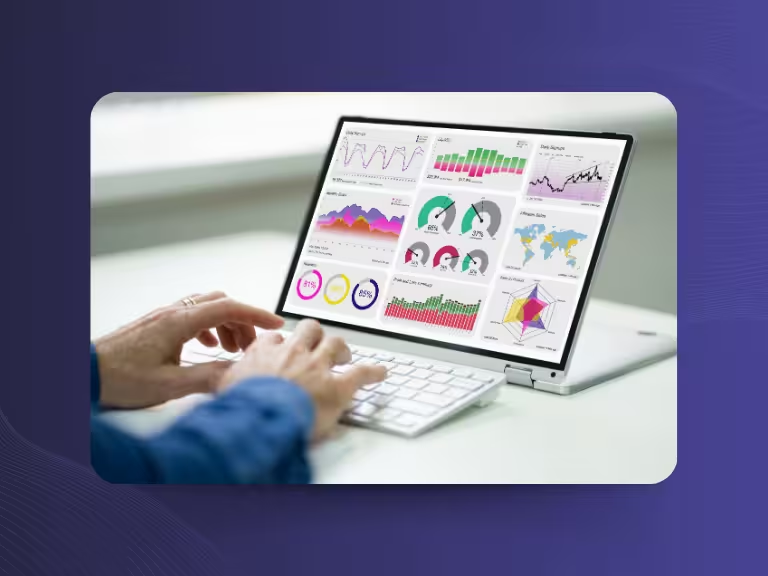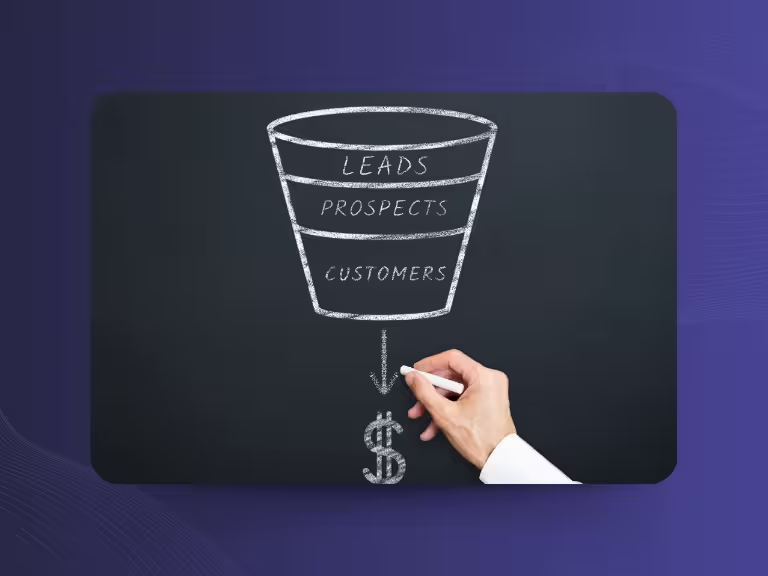In an era where competition is intensifying and customers are becoming increasingly demanding, sales organizations face the challenge of optimizing their sales processes and making better decisions. Sales analytics provides a crucial lever here: it enables the systematic evaluation of sales data to identify potential, optimize strategies, and increase revenue. This article shows you how to sustainably boost your sales success with data-driven approaches – from the basics to cutting-edge AI technologies.
What is Sales Analytics? – Definition and Objectives
Core Principles of Sales Analytics
Sales analytics encompasses the systematic collection, processing, and evaluation of sales and customer data to make informed decisions for increasing sales efficiency and revenue. At its core, it's about drawing the right conclusions from the wealth of available data and using them strategically for sales optimization.
The core principles are based on collecting relevant data from various sources such as CRM systems, sales conversations, marketing touchpoints, and customer feedback. This data is then analyzed in a structured way to recognize patterns, identify trends, and create forecasts. The goal is not only to understand what happened in the past, but also to predict what might happen in the future.
Benefits and Advantages
The benefits of sales analytics are diverse and measurable. First, it enables early recognition of customer needs and market trends. By analyzing customer behavior and preferences, sales teams can tailor their approach accordingly and significantly improve closing rates.
Another crucial advantage lies in transparency regarding sales performance. Instead of relying on gut feeling, sales managers can now make data-driven decisions about where resources can be deployed most effectively. This leads to optimized resource management and better planning of sales activities.
Concrete applications include sales forecasting, where future sales figures are precisely predicted, cross-selling activities that are strategically controlled through data analysis, and customer segmentation that enables personalized sales approaches.
Methods and Technologies in Sales Analytics
Classical Analysis Methods
The foundation of sales analytics is built on proven statistical methods. Descriptive statistics provide important baseline information about current sales performance through basic figures, reports, and dashboards. These classical approaches include continuous reporting and monitoring of key performance indicators (KPIs) such as conversion rates, average sales cycles, and revenue per customer.
Dashboard-based systems enable sales teams to see in real-time where they stand in relation to their goals. This transparent display of performance creates motivation and helps quickly identify problem areas.
Modern Approaches with AI and Machine Learning
The future of sales analytics lies in the application of advanced technologies. Predictive analytics uses machine learning to forecast sales opportunities and recognize patterns in large datasets. These technologies can, for example, predict which leads are most likely to result in a close.
Particularly valuable are automated action recommendations through augmented analytics. These systems not only analyze data but also suggest concrete measures – from optimal contact times to ideal product combinations for specific customers.
The integration of AI into CRM systems enables real-time analyses that provide valuable insights to sales representatives during sales conversations. Cloud-based platforms ensure the necessary flexibility and scalability for data processing.

Practical Application and Implementation
Application Areas of Sales Analytics
In practice, the versatility of sales analytics is particularly evident. Performance tracking of individuals and teams makes it possible to identify top performers and share best practices. At the same time, weaknesses can be recognized early and addressed through targeted measures.
Customer and market segmentation for targeted outreach is another important application area. By analyzing customer data, sales teams can personalize their messages and significantly increase the probability of success.
Particularly valuable is the optimization of sales processes and forecasting. Companies can thus shorten their sales cycles while creating more precise forecasts. The identification of up-selling and cross-selling potential leads to an increase in revenue per customer without additional acquisition costs.
Consulting and Support for Implementation
The successful implementation of sales analytics often requires external expertise. Consulting companies like Steinbeis play an important role in analyzing existing structures, developing concepts, and training employees. They bring not only technical know-how but also experience from various industries and projects.
A crucial aspect is change management. The introduction of sales analytics often means a cultural change in the company. Employees must develop acceptance for new processes and tools, which requires professional guidance.
Developing comprehensive data strategies is another important building block. This involves not only technology but also data quality and governance. Only when the data foundation is solid can meaningful analyses be created.
Practical Examples from Business
The successes are measurable: an international telecommunications provider was able to increase its closing rate by 15% through the use of AI-powered analytics. The company used machine learning to determine optimal contact times and offers for different customer segments.
A B2B manufacturer improved its cross-selling through segmentation analyses and significantly increased revenue per customer. By analyzing purchase patterns, complementary products could be identified and strategically offered.
Modern tools like Sally support sales teams in evaluating meetings and structuring sales data. Through automatic transcription and analysis of sales conversations, important information can be systematically captured and integrated into CRM systems.

Challenges, Risks, and Future of Sales Analytics
Typical Challenges in Implementation and Use
Despite all the advantages, implementing sales analytics also brings challenges. The biggest problem is often data quality and integration. Many companies have fragmented data sources that are difficult to consolidate.
Another obstacle is skepticism within sales itself. Many salespeople fear that analytics could be used for control and monitoring. Overcoming these fears and convincing employees of the benefits is an important success factor.
The high costs and complexity of system implementations deter many companies. Additionally, there's the risk of misinterpreting data without appropriate expertise. Without the right expertise, wrong conclusions can be drawn, leading to suboptimal decisions.
Future Trends and Developments (2026 and Beyond)
The future of sales analytics will be significantly shaped by technological developments. The increased use of AI and automation in the sales process will continue to grow. Systems will become more intelligent and able to make increasingly precise predictions.
Real-time analytics will become standard thanks to IoT and mobile devices. Sales representatives can thus access current data and recommendations during customer conversations.
Augmented analytics will be established as a standard for decision support. This technology automatically generates insights and action recommendations without users having to perform complex analyses themselves.
At the same time, requirements for data protection and ethical data use are increasing. Companies must ensure they use customer data responsibly while complying with all legal requirements. Digitalization will continue to be a crucial competitive advantage in the sales world.
Conclusion and Outlook
Sales analytics offers companies the opportunity to revolutionize their sales processes and generate sustainable growth. The possibilities range from optimizing individual sales conversations to strategic realignment of entire sales organizations.
Crucial for success is a comprehensive strategy that intelligently combines technology, data management, and employee integration. Companies that consistently follow this path can secure decisive competitive advantages.
The recommendation is clear: invest early in new technologies, start with pilot projects, and make successes measurable. Sales analytics is the key to future-ready and data-driven sales organizations. Those who set the right course today will tomorrow reap the fruits of an efficient and successful sales organization.
Sales analytics continues to evolve dynamically. Innovative tools like Sally support sales teams in using data efficiently – from meeting transcriptions to seamless integration into CRM and project management systems. This makes the sales routine even more data-driven and productive.

Test Meeting Transcription now!
We'll help you set everything up - just contact us via the form.
Test NowOr: Arrange a Demo Appointment



